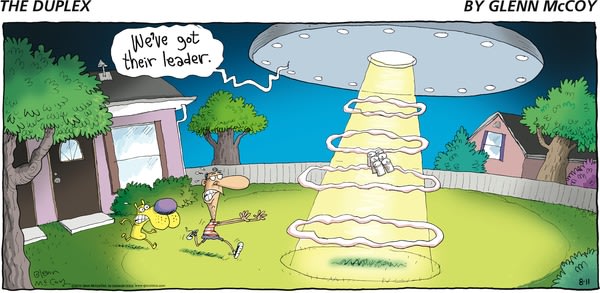Corporations Behaving Badly

It's not just the government that
might be keeping tabs on you. Many retailers are tracking you, too — or
at least your merchandise returns.
The companies say it's all in the name of security and fighting
fraud. They want to be able to identify chronic returners or gangs of
thieves trying to make off with high-end products that are returned
later for store credit.
Consumer advocates are raising transparency issues about the practice
of having companies collect information on consumers and create "return
profiles" of customers at big-name stores such as Best Buy, J.C.
Penney, Victoria's Secret, Home Depot and Nike.
The practice led to a privacy lawsuit against Best Buy that eventually was tossed out.
Each year, consumers return about $264 billion worth of merchandise,
or almost 9 percent of total sales, according to industry estimates.
Many buyers aren't aware that some returns, with and without
receipts, are being monitored at stores that outsource that information
to a third-party company, which creates a "return profile" that catalogs
and analyzes the customer's returns at the store.
"I had absolutely no idea they were doing that," said Mari Torres of
Springfield, Va., during a shopping trip with her daughter at the
Pentagon City Mall in Arlington, Va. "I honestly think it's an invasion
of privacy."
Torres, 39, says she's a responsible shopper and she'd like to know
what kind of information retailers keep on her, with whom they may be
sharing it, and how long they keep it.
One company that offers return tracking services, The Retail Equation
(TRE) in Irvine, Calif., says it doesn't share information in the
profiles it creates with outside parties or with other stores.
For example, if TRE logs and analyzes returns from a Victoria's
Secret customer, TRE only reports back to Victoria's Secret about the
return activity. It does not then also share that information with J.C.
Penney or other retailers that use TRE.
Even so, consumer advocates don't like it.
"There should be no secret databases. That's a basic rule of privacy
practices," says Ed Mierzwinski, consumer program director at the U.S.
Public Interest Research Group. "Consumers should know that information
is being collected about them."
The retail industry says it's not about monitoring the majority of its shoppers, but fighting theft.
Lisa LaBruno, senior vice president of retail operations at the
Retail Industry Leaders Association, says organized retail crime is
costing retailers tens of billions of dollars each year.
LaBruno says the problem goes way beyond the small-time shoplifter
and involves organized groups of criminals that make a living from the
large-scale theft of merchandise. For example, they might switch the UPC
code on a $600 faucet with a lower-cost code that rings up at $50. They
buy the faucet, then replace the fake UPC tag with the original,
higher-priced code, and return the faucet to the store without the
receipt for a $600 store credit, which can later be sold online.
"It's not to invade the privacy of legitimate customers at all,"
LaBruno said in an interview. "It's one of many, many, creative
solutions out there to help combat a really big problem that affects
retailers, honest customers, the entire industry and the public
at-large."
The problem, says government privacy experts, is disclosure, or lack of it in many cases.
People need to be aware when they make a purchase that if they return
it, some information from the transaction may be stored, according to
the experts.
"Most people think when they hand over a driver's license that it's
just to confirm identity and not to be kept to be used for future
transactions," says the Federal Trade Commission's Bob Schoshinski,
assistant director at the agency's division of privacy and identity
protection. "It shouldn't be that a third party is keeping a profile on
someone without them being informed what's going to happen when they
hand over their driver's license or some other information to a
retailer."
In some cases, the disclosure by retailers is conspicuous. In others, not so much.
At Best Buy, a sign at each cash register states the return policy,
and it's also on the back of the receipt, telling consumers that returns
are tracked and an ID is required. The disclosure adds: "Based on
return/exchange patterns, some customers will be warned that subsequent
returns and exchanges will not be eligible for returns or exchanges for
90 days. Customers who are warned or have been denied an exchange/return
may request a copy of their 'Return Activity Report'" from The Retail
Equation by contacting the company.
At Victoria's Secret and Bath and Body Works, disclosures at the cash
register said nothing about The Retail Equation's tracking returns.
Home Depot spokesman Stephen Holmes says the return tracking isn't just about money.
"This isn't only about protecting our bottom line," Holmes said in an
interview. "It's about protecting our communities, too. We know from
working with law enforcement at the state and federal levels that
organized retail crime is feeding other crimes, such as drug trafficking
and even terrorism, in some cases."
The Retail Equation says more than 27,000 stores use its services.
Best Buy, Home Depot, J.C. Penney, Victoria's Secret, Bath and Body
Works, and Nike are among its clients. TRE would not say how long the
profiles on consumers are kept in its database; it varies from retailer
to retailer. But a recent "return activity report" obtained by one
consumer turned up returns to The Sports Authority dating to 2004.
Here's how the tracking works.
—A consumer buys an item at Best Buy and later returns it. Even if
the shopper has the original receipt and is within the time frame when
returns are permitted, store policy requires that Smith provide a photo
ID, such as a driver's license. Other stores, such as Home Depot, only
require the ID if there's no receipt or if the item was purchased with a
store credit.
—The ID is swiped and then some information from the transaction is
sent by the store to The Retail Equation. The company says the
information captured from the ID typically includes the identification
number, name, address, date of birth and expiration date.
—The Retail Equation catalogues return activity by the shopper and
creates a "return activity report" on him with his returns at the store.
If TRE determines that there's a pattern of questionable returns that
suggests potential fraud, it would notify Best Buy, which could then
deny returns by that shopper at the store for a period of time.
The threshold for too many returns is determined by each retailer.
TRE says the vast majority of returns — about 99 percent — are accepted.
In a 2011 lawsuit in Florida against Best Buy, Steven Siegler
complained after the magnetic strip on his driver's license was swiped
for a return. He wanted the manager to delete the information. His suit
said Best Buy refused. He alleged that Best Buy violated privacy law
when it swiped the license. But a federal appeals court agreed with a
lower court ruling that the Driver's Privacy Protection Act didn't apply
in the case.












 Were
you a jock, nerd, druggie, goth, or a plastic in high school? Students
are often labeled by the crowd they hang with, or by their activities,
or by their choice of fashion or music. Educational psychologist
Bradford Brown has been studying adolescent social labels since the
1980s, and talks about how those terms have changed over time. For one
thing, as schools get bigger, there are more labels.
Were
you a jock, nerd, druggie, goth, or a plastic in high school? Students
are often labeled by the crowd they hang with, or by their activities,
or by their choice of fashion or music. Educational psychologist
Bradford Brown has been studying adolescent social labels since the
1980s, and talks about how those terms have changed over time. For one
thing, as schools get bigger, there are more labels. 
 We don't know whether Martin Teel of Christopher, Illinois, delivers newspaper on
We don't know whether Martin Teel of Christopher, Illinois, delivers newspaper on 











 There
are 600 million housecats in the world -give or take a few- making them
the most popular pet worldwide. It wasn't always so. How did the world
become so cat-obsessed? Cats as we know them are descended from the
African wildcat Felis sylvestris, shown here. It doesn't look so different from a housecat, except for those dangerous-looking fangs.
There
are 600 million housecats in the world -give or take a few- making them
the most popular pet worldwide. It wasn't always so. How did the world
become so cat-obsessed? Cats as we know them are descended from the
African wildcat Felis sylvestris, shown here. It doesn't look so different from a housecat, except for those dangerous-looking fangs.